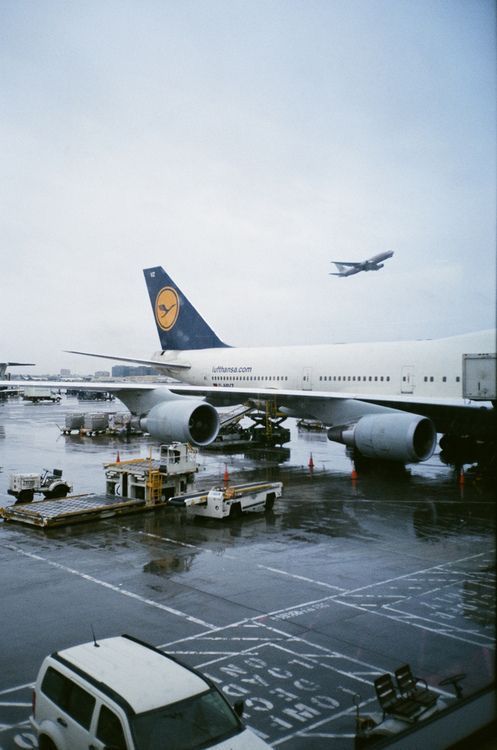Airport photography is a cool way to take pictures of airplanes and airports. To get great airport photos, you need the right equipment and understand the right settings for your camera. In this guide, we’ll tell you what gear you need to take awesome airport pictures.
Selecting the Right Camera for Airport Photography

When choosing between DSLR (Digital Single-Lens Reflex) and mirrorless cameras for airport photography, several key considerations should guide your decision-making process. These considerations ensure that your choice aligns with your preferences, budget, and the specific demands of capturing aviation scenes.
Image Quality and Versatility: DSLRs are renowned for their excellent image quality and versatility. They often feature larger sensors that excel in low-light conditions and dynamic range. On the other hand, mirrorless cameras have made significant advancements, matching DSLRs in image quality with high-resolution sensors and advanced image processors. Both systems offer remarkable image quality, and your choice should be influenced by your specific preferences and requirements.
Size and Portability: Mirrorless cameras shine in terms of size and portability. Their compact and lightweight design is ideal for the often dynamic and crowded environments of airport photography. In contrast, DSLRs, due to their larger bodies and optical viewfinders, tend to be bulkier. Your choice should hinge on your preferences regarding portability and the nature of your shooting scenarios.
Autofocus Capabilities: Modern DSLRs and mirrorless cameras boast impressive autofocus technology. Mirrorless systems, in particular, excel in fast and accurate autofocus, making them suitable for scenarios involving moving subjects, like aircraft in motion. While DSLRs offer reliable phase-detection autofocus, mirrorless systems may outperform them in speed and precision for certain situations, such as capturing planes during takeoff and landing.
Lens Compatibility: Assess the availability and compatibility of lenses for your chosen camera system. Both DSLRs and mirrorless cameras offer an array of lenses, but DSLRs, especially those from established manufacturers, may have a wider selection. Ensure that the lenses essential for airport photography, such as telephoto or wide-angle options, are readily available for your chosen system.
Electronic Viewfinder (EVF) vs. Optical Viewfinder: Mirrorless cameras rely on electronic viewfinders (EVFs) or LCD screens for composing shots, whereas DSLRs employ optical viewfinders. The choice between these viewfinder types is subjective. EVFs provide real-time exposure and white balance previews, which can be advantageous in environments with rapidly changing lighting conditions like airports. Optical viewfinders offer a direct and lag-free view of the scene. Your decision should align with your shooting style and needs.
Budget Constraints: Budget considerations are paramount. Mirrorless cameras, often equipped with advanced features, may come at a higher price. In contrast, DSLRs, especially older models, can offer more budget-friendly options without sacrificing image quality. Your budget should be a guiding factor while balancing the features and performance necessary for your airport photography
Full-Frame or Crop Sensor?
When selecting a camera for airport photography, the choice between a full-frame and a crop sensor camera is pivotal. Full-frame cameras typically offer superior image quality, especially in challenging lighting conditions, making them ideal for airport photography where lighting can vary. They excel in low-light performance and provide a wider dynamic range. However, they are often more expensive.
Learn more about photography Lighting Hacks.
On the other hand, crop sensor cameras are budget-friendly and more compact, making them a practical choice for photographers on a budget or those who value portability. They have a crop factor that effectively extends the reach of your lenses, which can be beneficial for capturing distant aircraft or specific details on the runway.
Consider your needs, budget constraints, and the specific shooting scenarios in airport photography. Whether you opt for image quality, budget-friendliness, or extended reach, your choice should align with your goals in capturing the aviation world with precision and creativity.
Essential Lenses For Airport Photography
Your choice of lenses significantly impacts the outcome of your airport photos. Different scenarios may require different types of lenses:
Prime Lenses
Prime lenses offer excellent image quality and are great for capturing sharp and well-composed photos. A 50mm prime lens is a versatile choice for various photography situations.

Zoom Lenses
Zoom lenses provide flexibility, allowing you to capture distant subjects. A telephoto zoom lens, like a 70-200mm, is ideal for photographing aircraft on runways or in the air.

Supporting Accessories For Airport Photography
Apart from the camera and lenses, several accessories can enhance your airport photography experience:
Tripod
A sturdy tripod is essential for getting sharp, long-exposure shots and keeping your camera steady for those perfect compositions. Look for a tripod that’s lightweight and easy to transport.

Filters
Polarizing filters can help reduce glare and enhance the color and contrast of your photos. UV filters also protect your lens from scratches and dust.

Extra Batteries and Memory Cards
Airport photography can be time-consuming. Always carry spare batteries and memory cards to ensure you never miss a shot.

capturing stunning airport photos is not just about your skills but also the equipment you use. Choose the right camera, lenses, and accessories to ensure that your airport photography journey is as successful and enjoyable as possible. Experiment, practice, and most importantly, have fun while you explore the captivating world of aviation through your lens.

